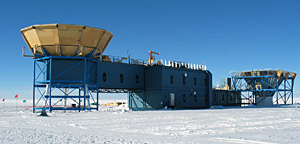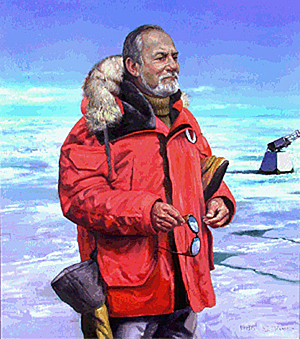
- Rozovsky wins prestigious NSF Early Career Award
- UD students meet alumni, experience 'closing bell' at NYSE
- Newark Police seek assistance in identifying suspects in robbery
- Rivlin says bipartisan budget action, stronger budget rules key to reversing debt
- Stink bugs shouldn't pose problem until late summer
- Gao to honor Placido Domingo in Washington performance
- Adopt-A-Highway project keeps Lewes road clean
- WVUD's Radiothon fundraiser runs April 1-10
- W.D. Snodgrass Symposium to honor Pulitzer winner
- New guide helps cancer patients manage symptoms
- UD in the News, March 25, 2011
- For the Record, March 25, 2011
- Public opinion expert discusses world views of U.S. in Global Agenda series
- Congressional delegation, dean laud Center for Community Research and Service program
- Center for Political Communication sets symposium on politics, entertainment
- Students work to raise funds, awareness of domestic violence
- Equestrian team wins regional championship in Western riding
- Markell, Harker stress importance of agriculture to Delaware's economy
- Carol A. Ammon MBA Case Competition winners announced
- Prof presents blood-clotting studies at Gordon Research Conference
- Sexual Assault Awareness Month events, programs announced
- Stay connected with Sea Grant, CEOE e-newsletter
- A message to UD regarding the tragedy in Japan
- More News >>
- March 31-May 14: REP stages Neil Simon's 'The Good Doctor'
- April 2: Newark plans annual 'wine and dine'
- April 5: Expert perspective on U.S. health care
- April 5: Comedian Ace Guillen to visit Scrounge
- April 6, May 4: School of Nursing sponsors research lecture series
- April 6-May 4: Confucius Institute presents Chinese Film Series on Wednesdays
- April 6: IPCC's Pachauri to discuss sustainable development in DENIN Dialogue Series
- April 7: 'WVUDstock' radiothon concert announced
- April 8: English Language Institute presents 'Arts in Translation'
- April 9: Green and Healthy Living Expo planned at The Bob
- April 9: Center for Political Communication to host Onion editor
- April 10: Alumni Easter Egg-stravaganza planned
- April 11: CDS session to focus on visual assistive technologies
- April 12: T.J. Stiles to speak at UDLA annual dinner
- April 15, 16: Annual UD push lawnmower tune-up scheduled
- April 15, 16: Master Players series presents iMusic 4, China Magpie
- April 15, 16: Delaware Symphony, UD chorus to perform Mahler work
- April 18: Former NFL Coach Bill Cowher featured in UD Speaks
- April 21-24: Sesame Street Live brings Elmo and friends to The Bob
- April 30: Save the date for Ag Day 2011 at UD
- April 30: Symposium to consider 'Frontiers at the Chemistry-Biology Interface'
- April 30-May 1: Relay for Life set at Delaware Field House
- May 4: Delaware Membrane Protein Symposium announced
- May 5: Northwestern University's Leon Keer to deliver Kerr lecture
- May 7: Women's volleyball team to host second annual Spring Fling
- Through May 3: SPPA announces speakers for 10th annual lecture series
- Through May 4: Global Agenda sees U.S. through others' eyes; World Bank president to speak
- Through May 4: 'Research on Race, Ethnicity, Culture' topic of series
- Through May 9: Black American Studies announces lecture series
- Through May 11: 'Challenges in Jewish Culture' lecture series announced
- Through May 11: Area Studies research featured in speaker series
- Through June 5: 'Andy Warhol: Behind the Camera' on view in Old College Gallery
- Through July 15: 'Bodyscapes' on view at Mechanical Hall Gallery
- More What's Happening >>
- UD calendar >>
- Middle States evaluation team on campus April 5
- Phipps named HR Liaison of the Quarter
- Senior wins iPad for participating in assessment study
- April 19: Procurement Services schedules information sessions
- UD Bookstore announces spring break hours
- HealthyU Wellness Program encourages employees to 'Step into Spring'
- April 8-29: Faculty roundtable series considers student engagement
- GRE is changing; learn more at April 15 info session
- April 30: UD Evening with Blue Rocks set for employees
- Morris Library to be open 24/7 during final exams
- More Campus FYI >>
11:30 a.m., Feb. 17, 2009----The University of Delaware has acquired a large collection of papers and records belonging to the pioneering South Pole explorer and astrophysicist Martin A. Pomerantz.
Pomerantz served as the director and then president of the Bartol Research Institute from 1959-1987. In 1977, he moved the institute to the University of Delaware, where it is a research center in the Department of Physics and Astronomy. He died Oct. 25, 2008, at the age of 91.
The acquisition was announced by Ian Janssen, director of University Archives and Records Management, on Feb. 11 at the University's William S. Carlson International Polar Year lecture “Building for Science at the South Pole,” by Jerry Marty, facilities construction and maintenance manager at the National Science Foundation.
Janssen said he was contacted in late 2007 by a representative from the American Heritage Center at the University of Wyoming, which was de-accessioning several large collections it had possessed for many years and was unable to process or provide access to researchers.
The 55 boxes of records, spanning 65 cubic feet, include Pomerantz's correspondence with polar stations, site reports from polar stations, administrative files from the Franklin Institute and the Bartol Research Institute, and photographs, ranging in date primarily from the 1950s to 1970s, although some records date to the 1930s, Janssen said.
Janssen said he expects the final processing of the collection to be completed by late 2009 or early 2010, after which the materials will be available to scholars and the public.
“University Archives and Records Management is the primary repository for the historical records that tell the story of the University of Delaware,” Janssen said. “The Pomerantz collection greatly enhances its existing collections, which the University community is encouraged to use. This unit always is interested in acquiring records, images and objects related to the history of this University,” Janssen noted.
Pomerantz pioneered the use of the South Pole as a laboratory for studying astronomy and astrophysics. He directed the Bartol Research Institute's Antarctic research program for 30 years, initiating cosmic ray and solar oscillation studies that continue at the South Pole at the Martin A. Pomerantz Observatory. The director of the National Science Foundation dedicated the facility in Pomerantz's honor in 1995.
In a statement issued upon Pomerantz's death, Karl Erb, the director of the National Science Foundation's Office of Polar Programs, noted: “Although few people truly achieve such status in their lifetimes, Dr. Pomerantz was literally a legend in Antarctic science for his vision and dedication to the field of astronomy, specifically in making the South Pole a pivotal location for cutting-edge astrophysical observations.”
Article by Tracey Bryant



